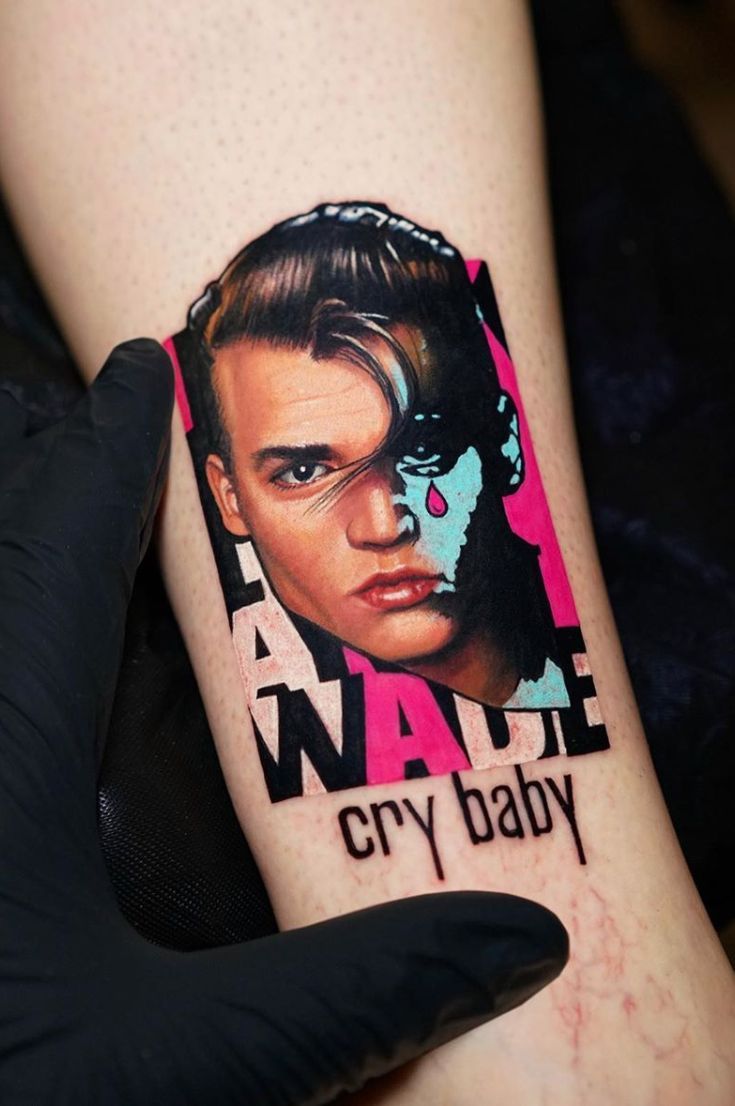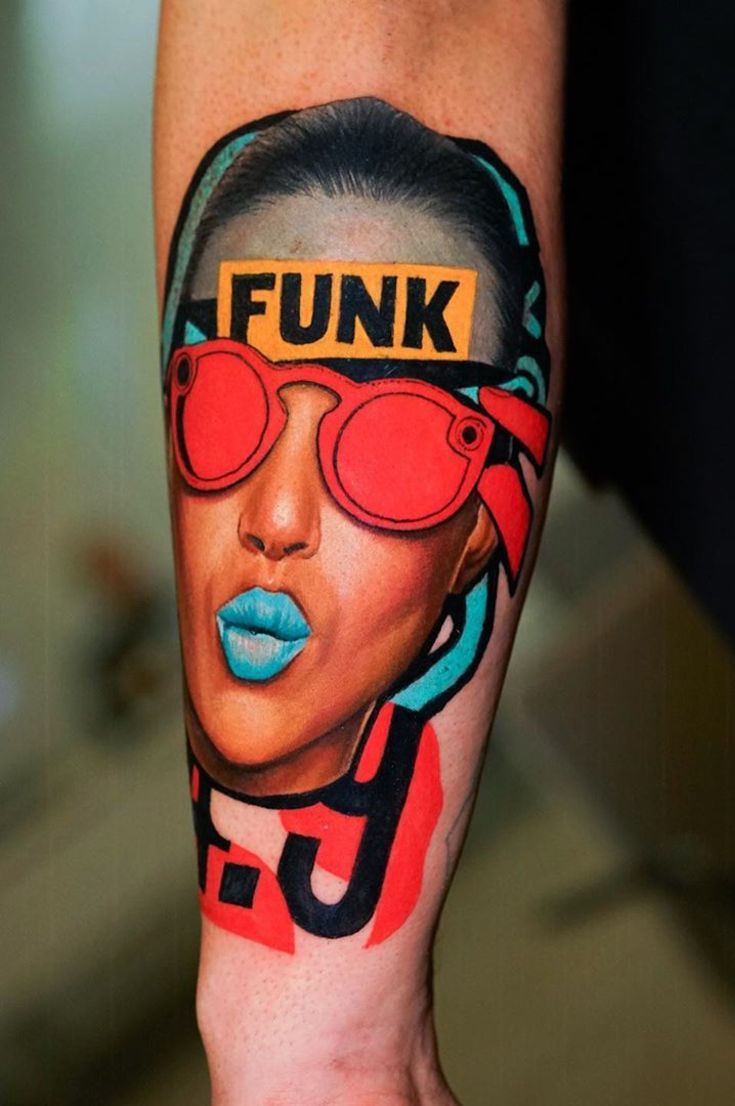Colored Tattoos
Colored Tattoos - Living Art on the Skin
Colored tattoos, also known as colorful tattoos or tattoos in color, are an exciting form of body art characterized by the use of vibrant colors and shades. These tattoos are known for their artistic diversity and the ability to create vibrant and impressive works of art on the skin. In this in-depth SEO article, we will explore the world of colored tattoos in more detail, starting with their definition, historical evolution, and unique aspects.
1. What are colored tattoos?
Colored tattoos are a form of body art that uses vibrant colors and shades to create detailed and artistic designs on the skin. Unlike black and white tattoos, which are only done in black ink, colored tattoos offer a wide range of design options and allow the use of different shades.
The artistic variety of colored tattoos is impressive. These tattoos can depict motifs such as flowers, animals, portraits, abstract designs, comics, and much more. The creativity of tattoo artists and the variety of colors available make it possible to create unique and individual works of art.
2. How long have colored tattoos been tattooed?
The practice of tattooing in color has a long history that spans many centuries. The use of colors in body art can be traced back to different cultures and times.
- Egyptian and Roman cultures: In ancient Egyptian and Roman cultures, colors such as henna and other natural pigments were used to create body art. These colors were often used to embellish and represent status and belonging.
- Polynesian Tradition: In Polynesian culture, colorful tattoos, also known as tatau, were used to represent tribal affiliation and cultural identity. These tattoos often had deep spiritual meanings.
- Modern developments: The modern practice of tattooing in color developed over the course of the 20th century. With the development of tattoo machines and a wider range of colors, tattoo artists were able to create detailed and colorful artwork on the skin. This led to a renaissance of colored tattoos.
3. What's the story behind colored tattoos?
The history of colored tattoos is a reflection of human creativity and artistic expression. Colored tattoos originated in different cultures and at different times, and have had multiple meanings and uses.
- Early Traces: The early forms of colored tattoos used natural pigments, such as henna, to bring designs to the skin. These designs were often used for ritual purposes and to beautify the body.
- Polynesian Tradition: In Polynesian culture, colored tattoos had deep spiritual and cultural meanings. These tattoos often served as a sign of tribal affiliation and social status.
- Modern developments: With the development of tattoo machines and a wider range of tattoo inks, colored tattoos have become increasingly popular in modern tattoo art. Artists began to explore the artistic diversity and creative possibilities of colored tattoos.
Colored tattoos are now a popular form of body art that is appreciated by people all over the world. They offer the opportunity to wear vibrant and impressive art on the skin that reflects the personality and artistic expression of the wearer. From realistic portraits to colorful abstract designs, colored tattoos offer a wide range of design possibilities.
Colored tattoos offer a wide range of motifs influenced by individual preferences, cultural influences, and artistic trends. The popularity of a particular motif can vary greatly, but here are some of the most commonly chosen colored tattoo designs:
- Flowers: Floral motifs are timeless and extremely popular in the world of colored tattoos. Roses, lilies, cherry blossoms, sunflowers, and orchids are just a few examples of flowers that are often depicted in colored tattoos. The variety of floral motifs allows people to express their individual preferences and meanings.
- Animals: Animals are a common motif in colored tattoos. From realistic portraits of pets to colorful depictions of exotic animals such as parrots, lions, and butterflies, animal motifs offer a wide range of expressive possibilities.
- Portraits: Colored portraits of loved ones, famous people, or characters from film and literature are very popular among people. These tattoos often capture vivid details and emotions.
- Artistic abstraction: Abstract designs and patterns offer the opportunity to create unique and individual works of art. These tattoos can include colorful geometry, watercolor effects, or colorful swirls.
- Watercolor style tattoos: Watercolor style tattoos use colors and mixed media to create the impression of watercolor paintings. These tattoos are known for their vibrant colors and artistic charm.
- Mythological figures and fantasy motifs: Figures from mythology, such as dragons, fairies and unicorns, as well as fantasy motifs such as elves and wizards are often captured in colored tattoos. These motifs offer a creative way to unleash the imagination.
- Superheroes: Comic book characters and superheroes from comics and movies are popular color tattoo designs among comic book fans and pop culture enthusiasts. Characters like Spider-Man, Batman, and Wonder Woman are often represented.
- Cultural Symbols and Patterns: Symbols and patterns from different cultures are often incorporated into colored tattoos. These can be spiritual symbols, Celtic patterns, mandalas, and more.
- Nature motifs: Depictions of landscapes, sunsets, ocean waves, and mountain landscapes are commonly found in colored tattoos. These motifs allow people to express their love for nature and the environment.
- Words and quotes: Colored tattoos with inspirational words, quotes, or lettering are popular among those who want to carry a message or memory on their skin.
Choosing a colored tattoo design often depends on personal preferences, meanings, and artistic taste. Colored tattoos offer the opportunity to wear vivid works of art on the skin and express individual personality and creativity.
Colors tattoos are used with well-developed colors and pigments
In tattoo art, as a rule, colors and pigments specially developed for tattoos are used, which are considered safe. These paints usually do not contain any harmful or toxic ingredients and have been tested for use on the skin. Most professional tattoo artists use inks that come from reputable manufacturers and meet common health and safety standards.
However, there are some paints and pigments that have been problematic in the past and are restricted or banned in some countries. These paints often contained harmful substances such as heavy metals or other potentially dangerous chemicals. A well-known example is lead white, which has been used in some old tattoo inks and is considered harmful to health.
However, most developed countries have strict regulations and laws in place to ensure that tattoo inks meet applicable health standards. Inks used for tattoos are monitored by health authorities and tattoo artist associations to ensure that they are safe for use on the skin.
It is important to research the colors your tattoo artist will use before tattooing. Reputable and experienced tattoo artists should be ready to provide you with information about the inks they use and their safety. If you have any concerns about possible allergic reactions or skin sensitivities, it is advisable to discuss this with your tattoo artist in advance.
In addition to the colors used, proper care and hygiene after tattooing is crucial to avoid infection and other complications. Make sure you carefully follow your tattoo artist's instructions for aftercare and seek immediate medical attention in case of any inconvenience or problem.





